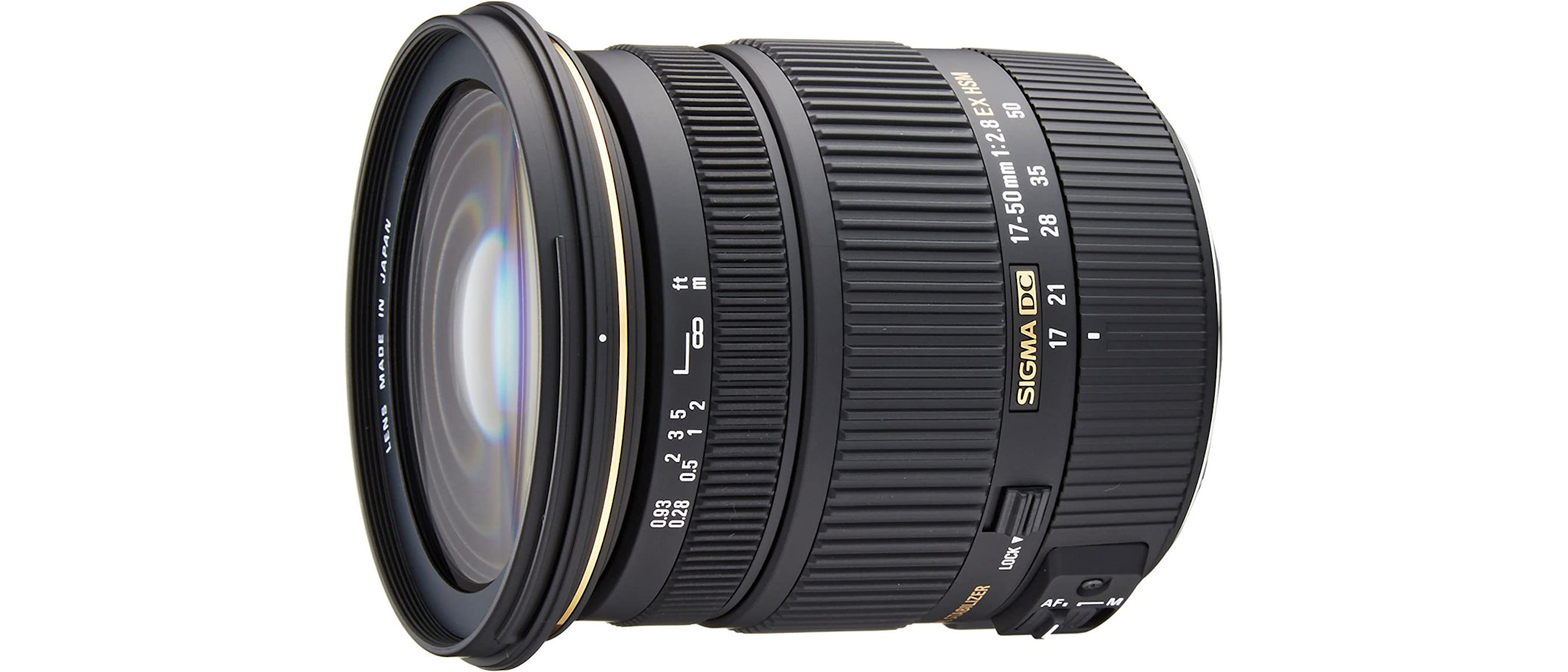Digital Camera World Verdict
Most of us are content with the standard zoom lens that we probably bought as part of a kit with out APS-C format DSLR. Handling and image quality are usually very convincing but one thing you generally won’t get is a fast f/2.8 aperture that remains constant throughout the zoom range. That’s the main attraction of this Sigma lens but handling and image quality could be better. It’s now disappeared from retailers’ shelves but makes a very affordable used buy.
Pros
- +
Fast, constant f/2.8 aperture
- +
Decent build quality
- +
Affordable purchase price
Cons
- -
Focus ring rotates during AF
- -
No full-time manual AF override
- -
No weather-seals
Why you can trust Digital Camera World
At a glance, the Sigma 17-50mm f/2.8 EX DC OS HSM appears to offer most of the same advantages as its Canon and Nikon APS-C format f/2.8 counterparts, but at less than half the price. It features optical stabilization as well as having an aperture rating of f/2.8 that remains constant throughout the zoom range. It’s quite small and lightweight, and feels pretty robust, but the main difference lies beneath the skin.
Specifications
Mount: Canon EF-S, Nikon F DX, Sigma, Pentax K, Sony A
Full frame: No
Autofocus: Yes
Stabilization: Yes
Lens construction: 17 elements in 13 groups
Angle of view: 72.4-27.9 degrees
Diaphragm blades: 7
Minimum aperture: f/22
Minimum focusing distance: 0.28m
Maximum magnification ratio: 0.2x
Filter size: 77mm
Dimensions: 84x92mm
Weight: 565g
Key features
This Sigma has some impressive sounding glass under the hood. There are two top-grade FLD (‘Fluorite’ Low Dispersion) elements two glass molded aspherical elements and one hybrid aspherical element. Sigma’s trademark Super Multi-Layer Coating is also present and correct.
Although the lens features an ultrasonic autofocus system, it’s not of the ring-type variety and relies on a small motor. On the plus side, this helps to enable a more compact construction, but the autofocus system isn’t as near-silent and lacks full-time manual override. Instead, you have to swap between AF and M settings using a small switch on the lens barrel. Worse still, the focus ring rotates during autofocus, so care is needed not to impede its action when holding the lens during shooting.
At least the front element of the lens doesn’t rotate during focusing, so using filters like circular polarizers and ND grads isn’t a problem. A focus distance scale is printed on the manual focus ring, which is positioned towards the front of the lens.
Another key feature of the lens is that it has an optical stabilizer, rated at 4-stop effectiveness. The lens is supplied complete with a petal-shaped, bayonet-fit hood and a padded soft case.
Performance
Image quality is sharp across most of the image frame but quite soft in the corners, especially at short to mid zoom settings when using apertures wider than f/5.6. Living up to its claims, stabilization is slightly more effective than in the competing Canon 17-55mm lens, but autofocus speed is a little pedestrian.
Lab results
We run a range of lab tests under controlled conditions, using the Imatest Master testing suite. Photos of test charts are taken across the range of apertures and zooms (where available), then analyzed for sharpness, distortion and chromatic aberrations.
We use Imatest SFR (spatial frequency response) charts and analysis software to plot lens resolution at the center of the image frame, corners and mid-point distances, across the range of aperture settings and, with zoom lenses, at four different focal lengths. The tests also measure distortion and color fringing (chromatic aberration).
Sharpness:
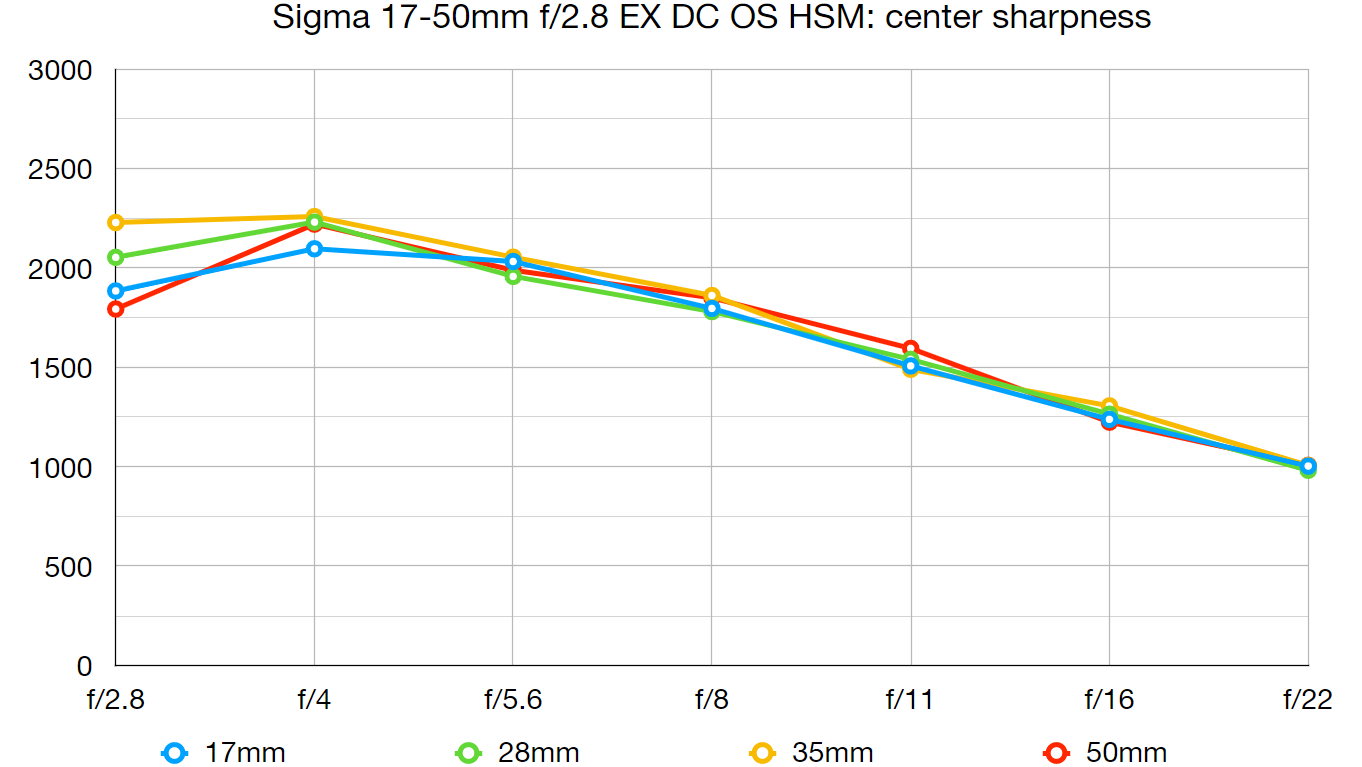
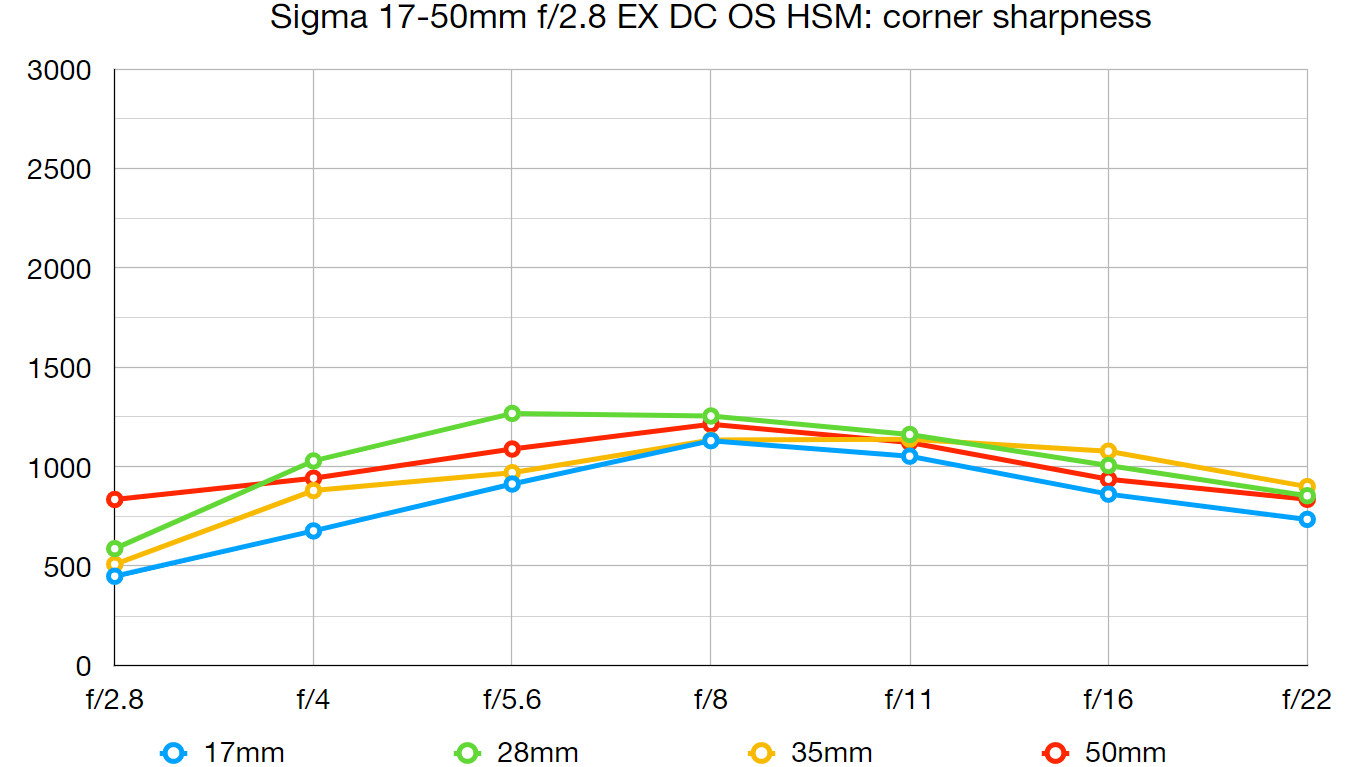
Centre-sharpness is good throughout the zoom range, even at f/2.8, but corner-sharpness is less impressive.
Fringing:
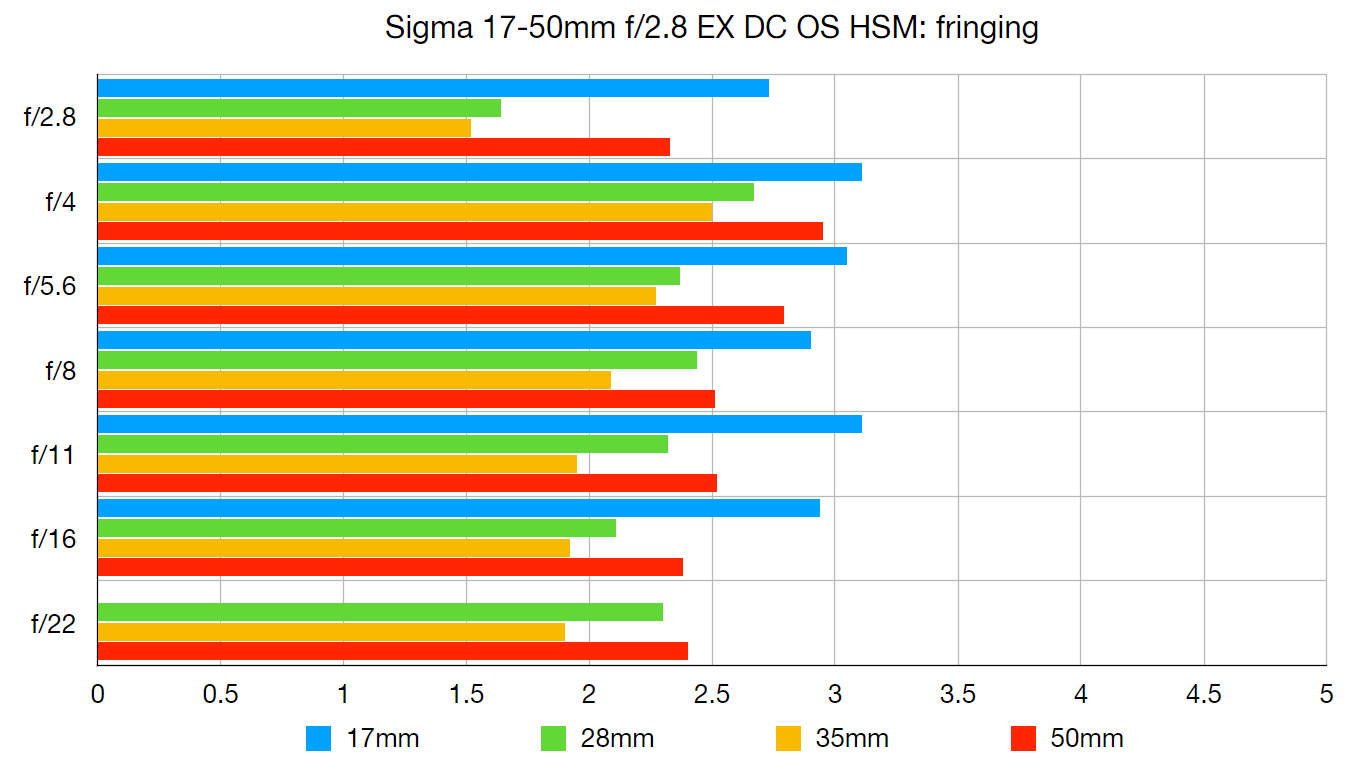
Color fringing is reasonably well controlled but a little worse than average at long zoom settings.
Distortion:
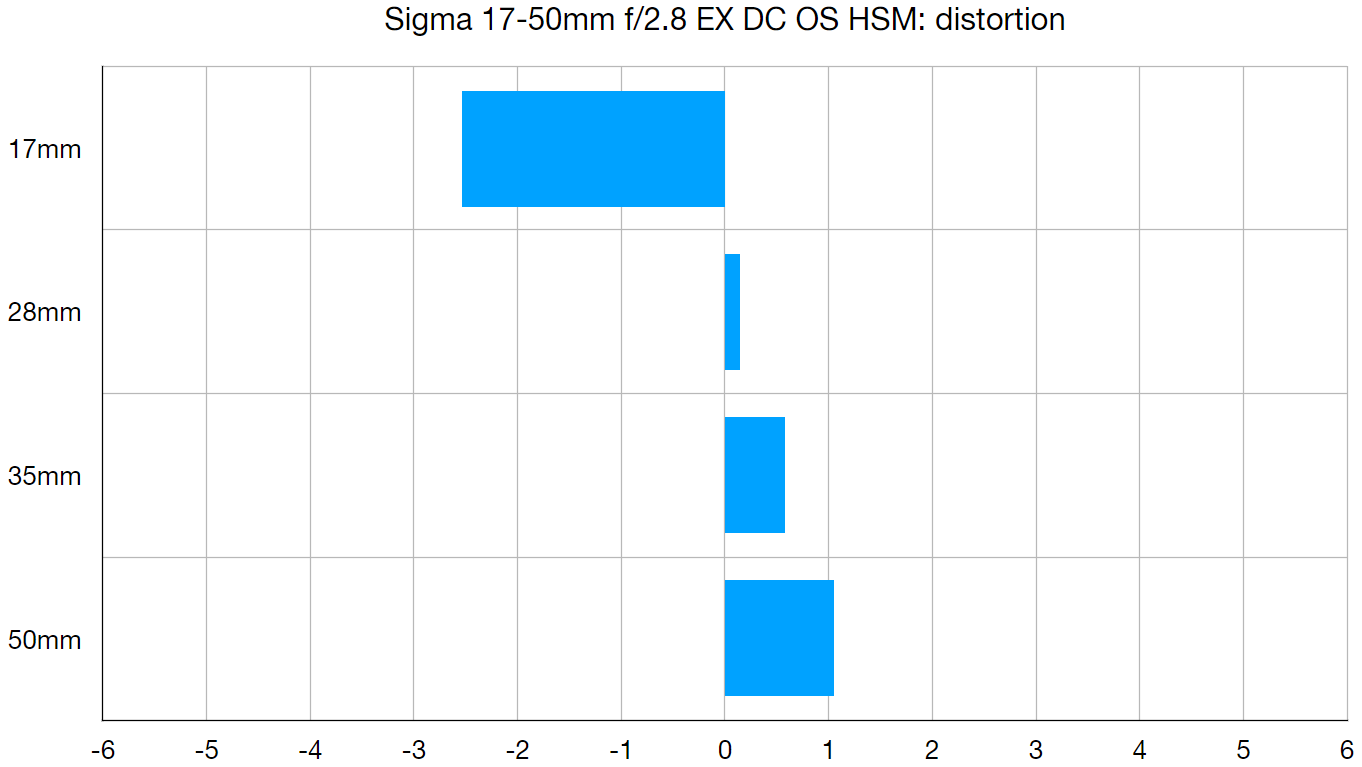
The amount of distortion is particularly minimal in the middle sector of the zoom range but barrel distortion can be quite noticeable at the short end.
Verdict
Most of us are content with the standard zoom lens that we probably bought as part of a kit with out APS-C format DSLR. Handling and image quality are usually very convincing but one thing you generally won’t get is a fast f/2.8 aperture that remains constant throughout the zoom range. That’s the main attraction of this Sigma lens but handling and image quality could be better. It’s now disappeared from retailers’ shelves but makes a very affordable used buy.
Read more:
• Best camera lenses to get
• Best Canon lenses
• Best Nikon lenses
• Best Sony lenses
Matthew Richards is a photographer and journalist who has spent years using and reviewing all manner of photo gear. He is Digital Camera World's principal lens reviewer – and has tested more primes and zooms than most people have had hot dinners!
His expertise with equipment doesn’t end there, though. He is also an encyclopedia when it comes to all manner of cameras, camera holsters and bags, flashguns, tripods and heads, printers, papers and inks, and just about anything imaging-related.
In an earlier life he was a broadcast engineer at the BBC, as well as a former editor of PC Guide.
